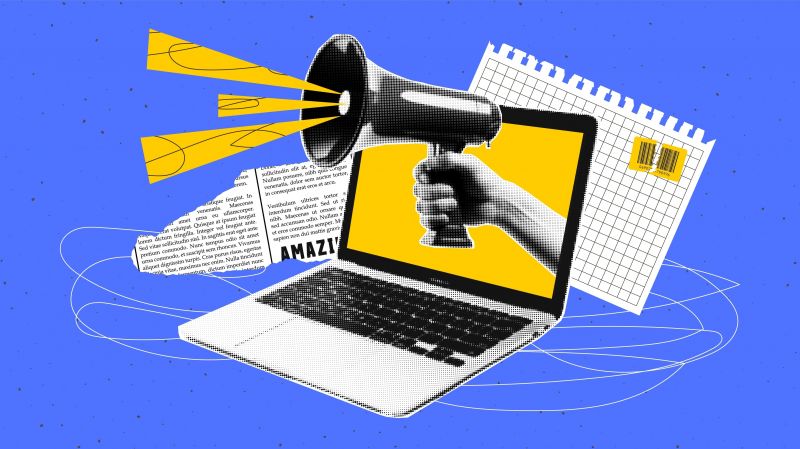Fake News Gives Brands a Real Headache
In the rush to capture eyeballs online, firms are inadvertently feeding the misinformation monster

When I was a magazine editor in the 1990s and early 2000s, most brand advertisers and the agencies they employed had a keen interest in the placement of their advertisements. They wanted prime real estate, of course — a right-hand page, the inside or outside back cover or opposite the table of contents. So our ad salespeople also had to be alert to the stories positioned alongside particular ads. One time, someone took their eye off the ball and allowed an Air Canada message to appear next to a feature about an airplane crash investigation. I think we would still be offering Air Canada free makeup spots to this day were the magazine still alive.
My, how far we have come. For much of their online advertising — which is to say most advertising — brand managers now readily turn over the ad placement decision to algorithms that promise to deliver the demographically correct audience. If their messages appear alongside the finest sludge that conspiracy theorists and malignant actors can produce, it’s just the cost of pitching product in the digital age. Placement be damned.
Did someone forget to tell marketing executives there is a massive fake news crisis in societies around the world? Bad actors, now using generative AI, are creating alternate realities — from political propaganda to health-related fake news — that are undermining civil society. Research has found that falsehoods reach 1,500 people six times faster than the truth. Social media users are 70 per cent more likely to share or retweet falsehoods than facts.
It’s not like advertisers are untouched by fake news. Eli Lilly’s stock price fell by more than four per cent after a fake Twitter account impersonating the company falsely announced insulin would be given away for free. Kay Jewelers lost 11 per cent of its share value in the week after fake news claimed its rings used low-quality gemstones instead of real diamonds.
Pepsi lost a lot of its fizz — twice. In 2016, its shares fell by four per cent during the U.S. presidential election campaign after false information circulated that Pepsi’s CEO supported Donald Trump. Two years later, Pepsi’s share price was hurt when fake news spread online that Pepsi products were laced with HIV-infected blood.
Brands score an own goal
These are all examples of misinformation aimed at big corporate targets. But marketers also willingly expose their brands to contamination from fake news when they use programmatic advertising. This popular technique for managing online advertising relies on algorithms to place banner ads on web pages that maximize reach to targeted audiences. Brands generally have little control over where their ads are displayed; the algorithms are optimized based on the marketing goals of audience views or conversions, not on avoiding fake news. As a result, some of the largest household brands have messages running alongside misinformation.
Jacob Brower, an associate professor and Distinguished Teaching Fellow of Marketing at Smith School of Business, says the loss of control and potential exposure to fake news is a problem that marketing executives seem to ignore. “Are enough of them staying up at night [because of fake news]?” he asks. “No, because more and more they’re just relying on metrics and algorithms.”
Brower adds: “When you let the algorithm run and you have conversion set up to be your metric, it will do whatever it takes to get the right people that are going to convert. Is that good for your long-term brand image versus getting the transaction today? For every eyeball that turns into a conversion, how many people are you reaching that are saying, I can’t believe their ad is right next to that post.”
Recent research reveals the brand damage that a close encounter with fake news can cause. One study found that news content low in truthfulness can hurt brands when their messages are displayed on the same web page. When the study participants perceived a news article as less credible, they were more likely to mistrust the advertised brand and to hold negative brand attitudes.
This finding wasn’t a flash in the pan. Experiments conducted recently with Dutch consumers were the first to give empirical evidence that brands can be contaminated by disinformation. The study confirmed that when an ad is displayed on the same web page as fake news, brand attitude and brand trust are negatively affected. The effect is even stronger when the ad has some connection with the fake news (such as when a message from a mobile service provider is shown alongside fake news about 5G).
But the negative brand effects reach even further. The experiments showed that when an ad is delivered alongside misinformation, people are more likely to believe the fake news.
In short, brand advertising appearing next to misinformation has a triple-whammy effect: it provides an incentive for websites to publish fake news; it increases the credibility of the fake news; and it exposes the brand to consumer blowback and reputational damage.

How to fight fake news
Brands that are serious about inoculating themselves from the spillover effects of misinformation and rebuilding brand trust share similar practices. They are adept at using tools such as blacklists of fake news sites, they contract with ethical digital ad agencies, and they devote resources to monitoring fake news in real time.
They also do not expect fact-check labels used by some social media sites to solve the fake news problem for them, which is prudent. A recent experiment showed that a news story flagged as false not only undermines the credibility of the story but also the credibility of the adjoining ad and brand. Even when the fake news has a positive spin, a fact-check label damages nearby ads.
Emerging evidence from fake news researchers offers other guidance. Experiments in psychology, for example, have found that corrections issued by a company can be effective at reducing false beliefs. The corrections are particularly effective when they include a factual alternative explanation for why the misinformation is false or why it may have spread (the myth-and-fact approach). Recent research has found that providing additional details increases the longevity of correction effects.
Studies have also laid to rest concerns that repeating false claims, even in a correction, is counterproductive by giving more oxygen to the original lie.
In the medium term, brands may have more tools to work with. It’s likely that a hybrid approach will develop in which humans work with AI and machine learning algorithms to ensure ads are not placed next to compromised content. AI has already revealed that fake news stories are substantially more negative than real news and that they trigger emotions of disgust and anger. Algorithms are undoubtedly being trained to sniff out potential fake news that marketing staff can then verify.
A cynic may say that big brands are getting what they deserve. Marketers have always skirted the line between fact and fiction and have increasingly adopted “truthiness and post-fact positions.” Many of them churn out dubious product claims that look a lot like fake news. Some industries — notably Big Tobacco and Big Oil — have mastered the art of undermining medical and environmental science to maintain their social licence to operate.
An optimist may respond by suggesting that the fake news crisis is an opportunity for firms to revisit their digital advertising strategies and to view these strategies through the lens of social responsibility. It’s also a chance to revisit how their brands are managed.
As Brower points out, in today’s marketing world, the keepers of the ad dollars, focused on short-term metrics, are seen as more credible than the keepers of the brand, who talk about ephemeral long-term brand value yet struggle to have their voices heard. As a result, technology-driven tactics designed to drive clicks and conversions win out, even if it means inadvertently feeding the misinformation monster and tarnishing the brand.
“From a branding perspective, this handing over the keys to data scientists and algorithms — especially AI where we can’t see what’s inside the black box — can lead to bad situations,” says Brower. “It can lead to situations where you’re actually deteriorating the value of the brand in exchange for short-term bumps in sales . . . Yes, you’re getting sales, but at what cost? And we don’t know the cost.”